Editorial: General Motors Death Watch 247: Brandicide Won't Save GM
Time’s up! GM has announced that 2010 will be Pontiac’s final year. No surprise to anyone who’s been reading the writing on the wall. But nevertheless a sign that those in charge of GM’s destiny are more interested in appearing to be doing something than in actually addressing the core weaknesses of the car manufacturer. Why is so much attention focused on GM’s brands? Because, like the CEO, they’re what outsiders can see and at least superficially understand. The real problems are both less visible and less easily comprehensible.
As some within GM have long recognized, a wide array of brands could be a major competitive advantage. When you have multiple brands to work with rather than just one or two, each brand can be tightly focused, and thus be more meaningful than a brand that must be all things to all people. GM didn’t prosper because it failed to provide each brand with distinctive, desirable cars. Instead, every brand attempted to be all things to all people. Why? Partly because distinctive products cost more to develop than badges alone, but also because each brand had its own dealers, and each dealer wanted one of everything.
Dealers’ desire was not irrational. Demand for different sorts of cars varies with gas prices, the economy, and fluctuating consumer tastes. Any dealer that wanted steady sales—a key goal for any business—wanted a diverse set of products to sell. This longstanding problem was finally addressed a few years ago, when Buick, Pontiac, and GMC were combined into a single channel. This should have freed up Buick and Pontiac to focus on specific groups of car buyers with finely tuned products.
Pontiac’s focus was to be enthusiasts—for real this time. Bob Lutz announced that every future Pontiac would be a rear-wheel-drive performance-oriented car. Three models, each with two or three body styles, would have been sufficient: the Solstice coupe and roadster, the large G8 sedan and (planned but canceled) wagon, and a smaller Alpha-based coupe, sedan, and (possibly) hatch. No other mainstream brand offers a compact rear-wheel drive sedan, or focuses so tightly on enthusiasts. An Alpha-based Pontiac could have been a big winner. Hopefully we’ll still see this car from Chevrolet. But it would have been better from a brand focused entirely on driver’s cars.
So, maybe GM had finally figured out how to realize Pontiac’s potential, only to have gas prices shoot up and then have the bottom fall out of the market. GM being GM, plans for performance-oriented cars were tabled not long after gas prices spiked. Unlike the strongest auto companies, GM has long had a habit of constantly second-guessing its plans and over-reacting to car market fluctuations. Of course, this time around GM had no choice: it’s out of cash. It might have finally muddled through to a solution, but too late.
And so Pontiac will die next year. Saturn, Hummer, and Saab will be gone even sooner. This doesn’t change one key fact: killing brands does not address GM’s historical inability to consistently create distinctive, desirable cars.
Limited resources have often been blamed for this inability. Supposedly GM split its product development and marketing funds too many ways. But if each product was viable, it should have been possible to gather the necessary funds for it, at least before the recent collapse. Funds were limited because of limited faith, both inside and outside GM, that proposed products would be profitable.
The root problem: senior executives at the top of the corporation continue to be involved in more product decisions than they can possibly make well. These senior executives cannot understand each product and market the way an empowered, dedicated product team could. And they lack the time to personally make all of the decisions that need to be made.
The visible consequences: a few great cars that received the undivided attention and logjam-breaking influence of senior executives, and a larger number of not-so-great ones that did not receive this attention and influence.
Two possible solutions: reduce product offerings to a number that senior management can personally attend to, or transfer decision-making authority for these products to multiple units lower in the organization. GM made feints at the latter strategy, most notably with the mid-nineties formation of cross-functional vehicle teams led by Vehicle Line Executives. But this decentralization was never complete, and with each crisis the organization backslid to its old ways.
Even with GM on the brink of bankruptcy, there’s still no sign that substantial changes are being made to the GM organization. They’ve replaced the CEO and they’re reducing the number of brands. This treats the symptoms rather than the disease. How this course of action generally turns out: the surgeon (wielding a cleaver in this case) cuts and cuts and cuts until the patient dies.
Michael Karesh lives in West Bloomfield, Michigan, with his wife and three children. In 2003 he received a Ph.D. from the University of Chicago. While in Chicago he worked at the National Opinion Research Center, a leader in the field of survey research. For his doctoral thesis, he spent a year-and-a-half inside an automaker studying how and how well it understood consumers when developing new products. While pursuing the degree he taught consumer behavior and product development at Oakland University. Since 1999, he has contributed auto reviews to Epinions, where he is currently one of two people in charge of the autos section. Since earning the degree he has continued to care for his children (school, gymnastics, tae-kwan-do...) and write reviews for Epinions and, more recently, The Truth About Cars while developing TrueDelta, a vehicle reliability and price comparison site.
More by Michael Karesh
Latest Car Reviews
Read moreLatest Product Reviews
Read moreRecent Comments
- Sayahh I do not know how my car will respond to the trolley problem, but I will be held liable whatever it chooses to do or not do. When technology has reached Star Trek's Data's level of intelligence, I will trust it, so long as it has a moral/ethic/empathy chip/subroutine; I would not trust his brother Lore driving/controlling my car. Until then, I will drive it myself until I no longer can, at which time I will call a friend, a cab or a ride-share service.
- Daniel J Cx-5 lol. It's why we have one. I love hybrids but the engine in the RAV4 is just loud and obnoxious when it fires up.
- Oberkanone CX-5 diesel.
- Oberkanone Autonomous cars are afraid of us.
- Theflyersfan I always thought this gen XC90 could be compared to Mercedes' first-gen M-class. Everyone in every suburban family in every moderate-upper-class neighborhood got one and they were both a dumpster fire of quality. It's looking like Volvo finally worked out the quality issues, but that was a bad launch. And now I shall sound like every car site commenter over the last 25 years and say that Volvo all but killed their excellent line of wagons and replaced them with unreliable, overweight wagons on stilts just so some "I'll be famous on TikTok someday" mom won't be seen in a wagon or minivan dropping the rug rats off at school.



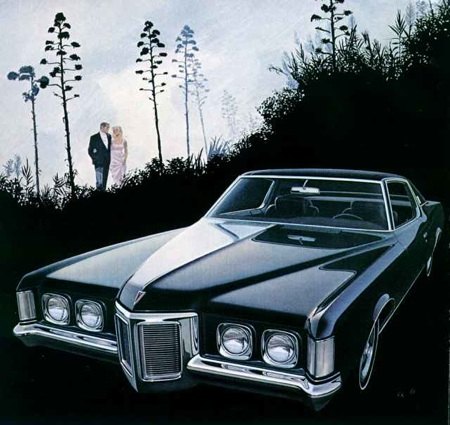














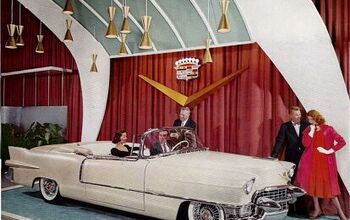
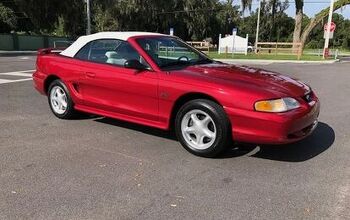

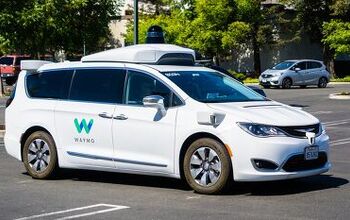
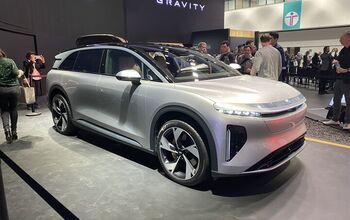
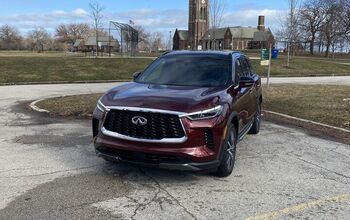




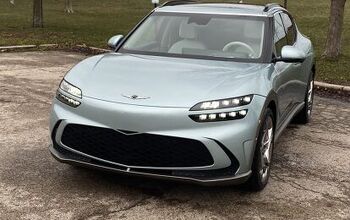


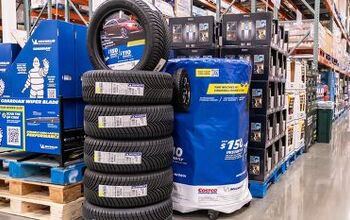
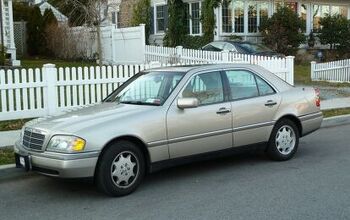
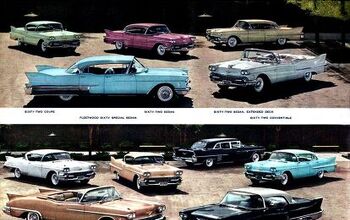
Comments
Join the conversation
Okay, here's my painfully uninformed guess at what they might do, or at least maybe should consider. TRUCKS Chevrolet: sell "consumer grade" things. Their trucks would be SUVs and lower-weight-capacity vans and pickups. GMC: sell "professional grade" things. Their trucks would be higher-weight-capacity vans and pickups, and rolling chassis for utility vehicles and whatnot. CARS Chevrolet: sell "consumer grade" things. Like Nissan's 350Z compared to Infiniti's G37, chevrolet products would have the cheaper interiors, less elegant exteriors, and lower price tags. Not much change, really. If you like American products, this is where you go. Buick: sell "alternative" things, no badge-engineering allowed. On the small side, you'd have the Buick Astra and the Buick Vibe; on the large side, you'd have the Buick G8 and the Buick Sky (all renamed, of course.) Buick as a brand sucks, so reinvent it by letting Buick mop up people who don't like what Chevrolet has on offer. If you hate American products, this is where you'd stop on your way off the Chevrolet lot. Cadillac: sell "top-of-the-line" things. The CTS, the Escalade, a fantastic small car along the lines of the Mini, and so on. Keep the product mix small, and make it the best stuff you sell. The Corvette might be the only exception to this, but in theory it should be a Cadillac. Where Chevrolet is Nissan, Cadillac is Infiniti.
Lets see... there is a huge demand for the new Camaro and GM's flagship sports car is also a Chevy. So what exactly does GM need Pontiac for?